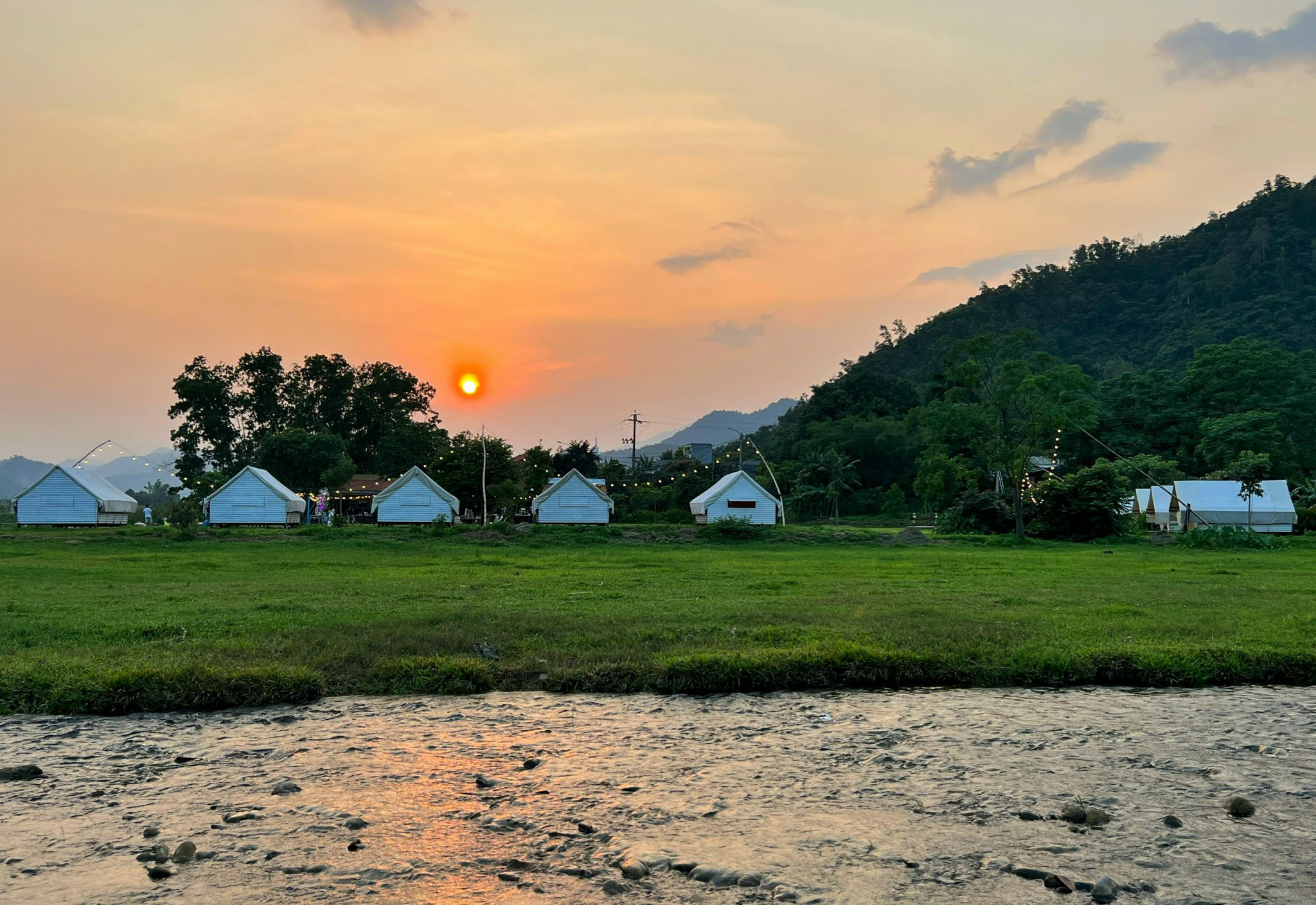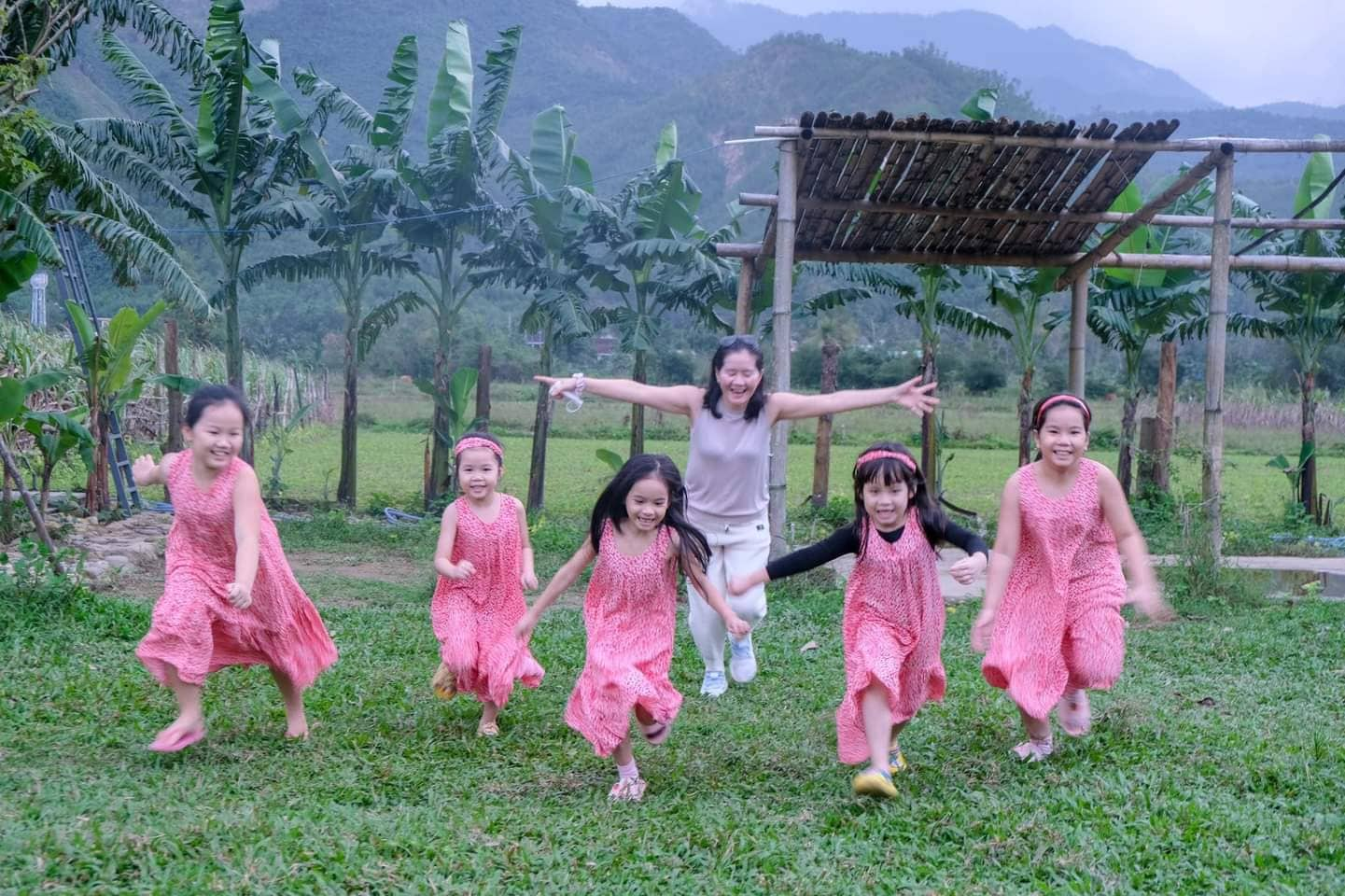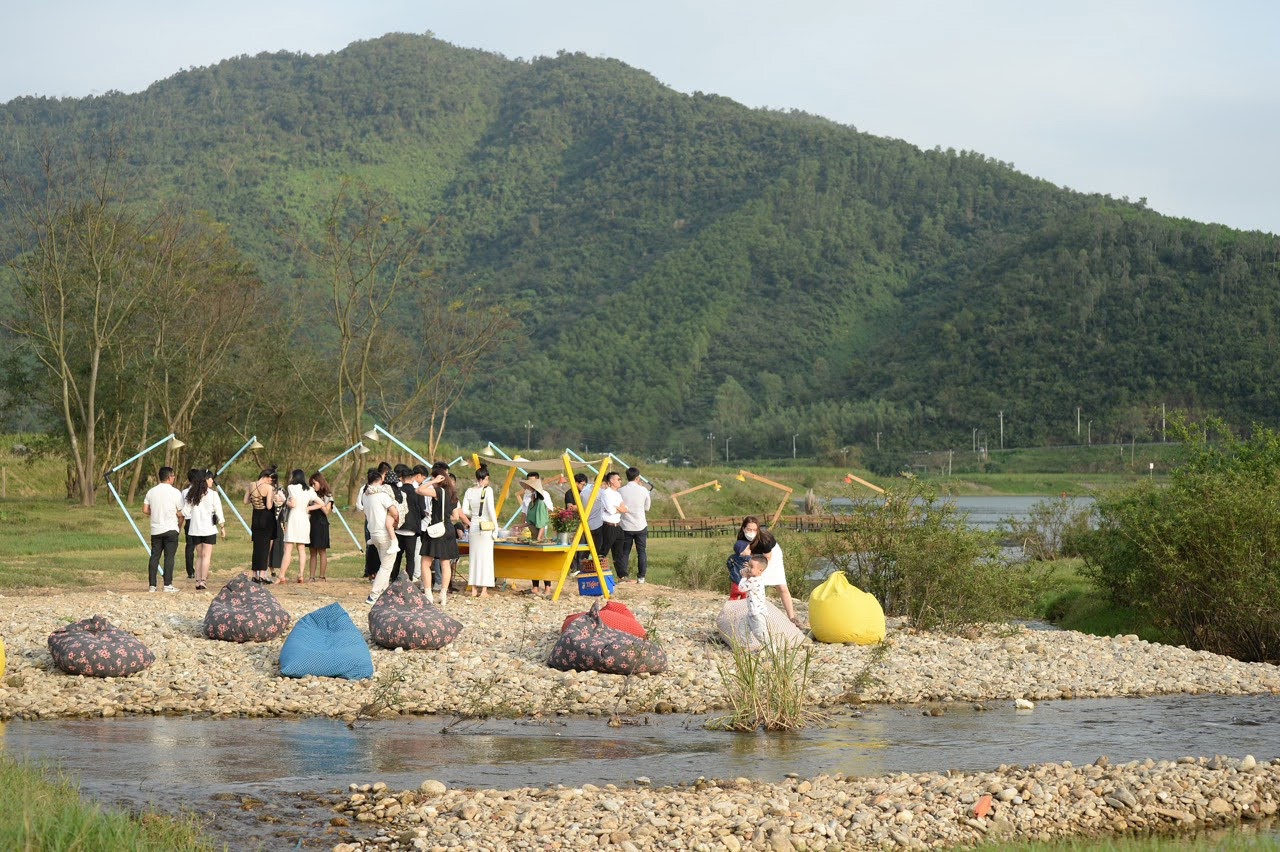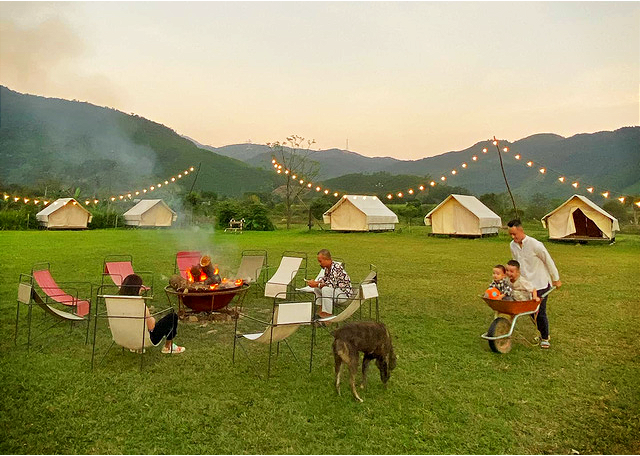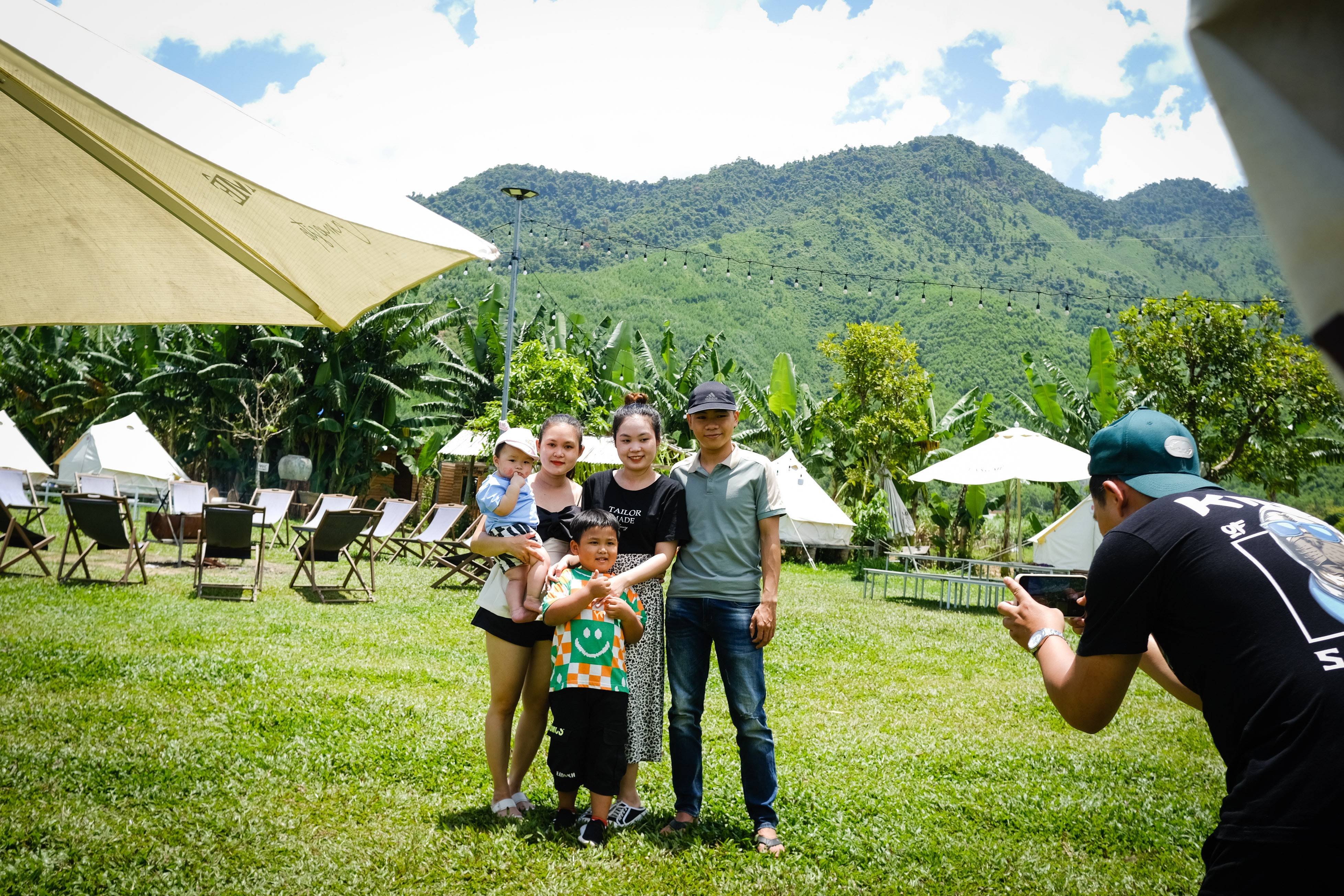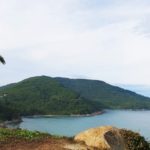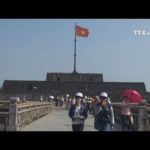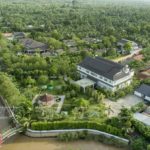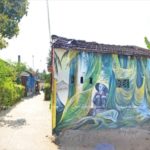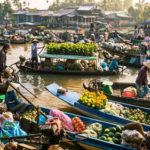The rise of the new travel form has woken up the verdant land on the edge of the vibrant coastal city in central Vietnam and brought local people countless jobs.
A hidden gem
The green scenery in Hoa Bac Commune’s villages, which are located along the Cu De River, is a magnet for people seeking a getaway from urban life.
The long journey of dozens of kilometers along a small asphalt road from the Nam O Bridge to Hoa Bac proves to be worth it.
Upon their arrival, along the hillside, the river gradually appears in the visitor’s horizon, accompanied by foggy smoke from burning rice straws on haverest fields and familiar features of the countryside such as fishing nets, shrimp and fish farms, enormous sugarcane, and corn fields, offering travelers serene and nostalgic feelings.
Flows of clear water from streams originating from Bach Ma Mountain, where clouds take shape over the peak all year round, merge to form the Cu De River crossing Hoa Bac.
The river does not only irrigate the fields but also shapes the mountain and forest landscapes in Hoa Bac.
|
|
| A woman plays a game with children at an ecotourism site along the Cu De River in Hoa Bac Commune, Hoa Vang District, Da Nang City, Vietnam. Photo: Q.T. / Tuoi Tre |
Nature favorably bestows Hoa Bac with such beauty of a hidden gem, but it did not benefit the locals.
Younger generations grow up and take one same path — leaving their hometown to find work in the city — as they rarely start farming jobs, which were their parents’ bread and butter.
But the commune has changed.
A place to immerse oneself in nature
Yen Retreat, the first campsite along the Cu De River, recently became popular online because of bridal photos and travel pictures taken by tourists.
It offers a combination of white tents on the green grass under the white clouds and the blue sky over the green river, along with basic amenities.
That was more than enough to create a ‘fever’ among young people.
People come to Hoa Bac not to enjoy comfortable resort services, but to satisfy the desire to immerse themselves in unspoiled nature.
Visitors are expected to sleep outdoors in a peaceful atmosphere, with background music played by fish splashing in the river and frogs croaking from the fields, inhaling the fresh air and smelling the herbal scent wafting in the wind.
|
|
| Tourists visit an ecotourism site along the Cu De River in Hoa Bac Commune, Hoa Vang District, Da Nang City, Vietnam. Photo: Q.B. / Tuoi Tre |
Ngoc Dieu, a 33-year-old tourist from the center of Da Nang, recently had a satisfactory weekend trip with her husband and two young children at Yen Retreat.
She visited many modern tourist areas before, but the overnight stay in Hoa Bac gave her “a very different experience.”
“This is not a place for a comfortable experience, but we love it because it feels like we’re closer to nature and living slower compared to the hustle and bustle of our usual everyday life,” said Dieu.
“My children love to play with flowers and plants.
“I feel a special joy in the children, unlike the times when we usually take them to the movies or allow them to play video games.”
Located near Yen Retreat, nestled in the middle of the vast sugarcane fields facing the river, a new ecotourism site called Lang Me (Me Village) has lured many visitors with its wild look.
Lo Vinh Hoang, a 32-year-old, who recently visited Me Village for the first time with his family and friends, said that he was completely surprised that Da Nang had such a beautiful natural landscape.
Both the aforementioned sites are suitable for group activities and weekend camping.
|
|
| This photo shows the Me Village camping site along the Cu De River in Hoa Bac Commune, Hoa Vang District, Da Nang City, Vietnam. Photo: Q.B. / Tuoi Tre |
‘Wind of change’
The establishment of ecotourism sites has brought about the ‘wind of change’ in Hoa Bac.
The locals started earning their living from doing tourism, accommodation, and restaurant businesses.
Truong Thi Thuy Linh, a 18-year-old native to Hoa Bac, is now able to apply her two years of experience of working as a bartender to earn an income right in her hometown, instead of struggling to make ends meet in the city.
Linh said the monthly income from bartending is much higher than farming.
It allows her to add to her savings, in addition to helping her family.
Linh’s mother is also working for an ecotourism site as a cleaning lady.
Her family’s life has been significantly improved.
|
|
| A family takes a photo at a camping site along the Cu De River in Hoa Bac Commune, Hoa Vang District, Da Nang City, Vietnam. Photo: T.L. / Tuoi Tre |
Many locals in Hoa Bac are enjoying the ‘wind of change’ as Linh’s family is.
Lien, the owner of a streetside stall selling sugarcane drinks, said the business has been profitable and earns her enough to afford groceries and her children’s books.
Many residents of Hoa Bac are turning their backs on farming which generates a precarious income in comparison and switching to running tourism services, such as eateries and beverage stalls.
“Thanks to tourism, this place has developed and the people have benefited,” said Huynh Thi Cam Hanh, a 35-year-old resident of Hoa Bac, who supplies prepared food to tourists.
“Melons, eggplants, chickens, and ducks are sold to tourists for a good price.
“They even place further orders to bring the agricultural products home.”
Like us on Facebook or follow us on Twitter to get the latest news about Vietnam!
The hidden charm of Tam Hai island
In spite of the scorching sun in every corner of the central region in summer, Tam Hai, a remote island in Quang Nam province, is completely separated from such heat. The air on the island is very cool like there is a giant fan blowing the wind in from the ocean. Tam Hai is peacefully beautiful with a clear blue sea, mossy cliffs, green coconut trees and small villages typical of a coastal countryside.
Attractive destination in western region
NDO – Cai Rang floating market is an unmissable destination of the tours on the Mekong River. With many unique cultural values and the characteristics of Can Tho, in 2016, the Cai Rang floating market was recognised as an national intangible cultural heritage by the Ministry of Culture, Sports and Tourism.

